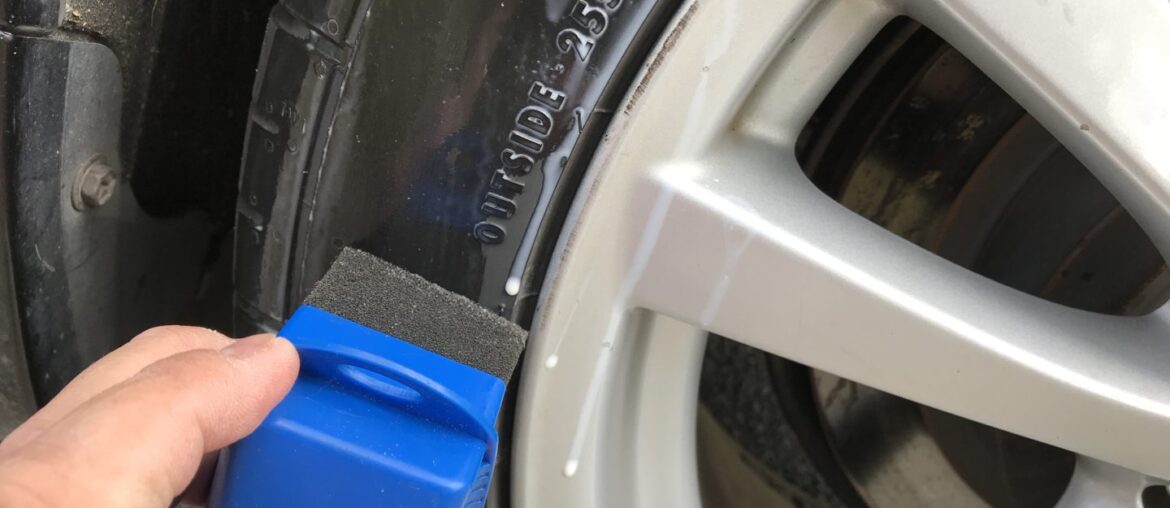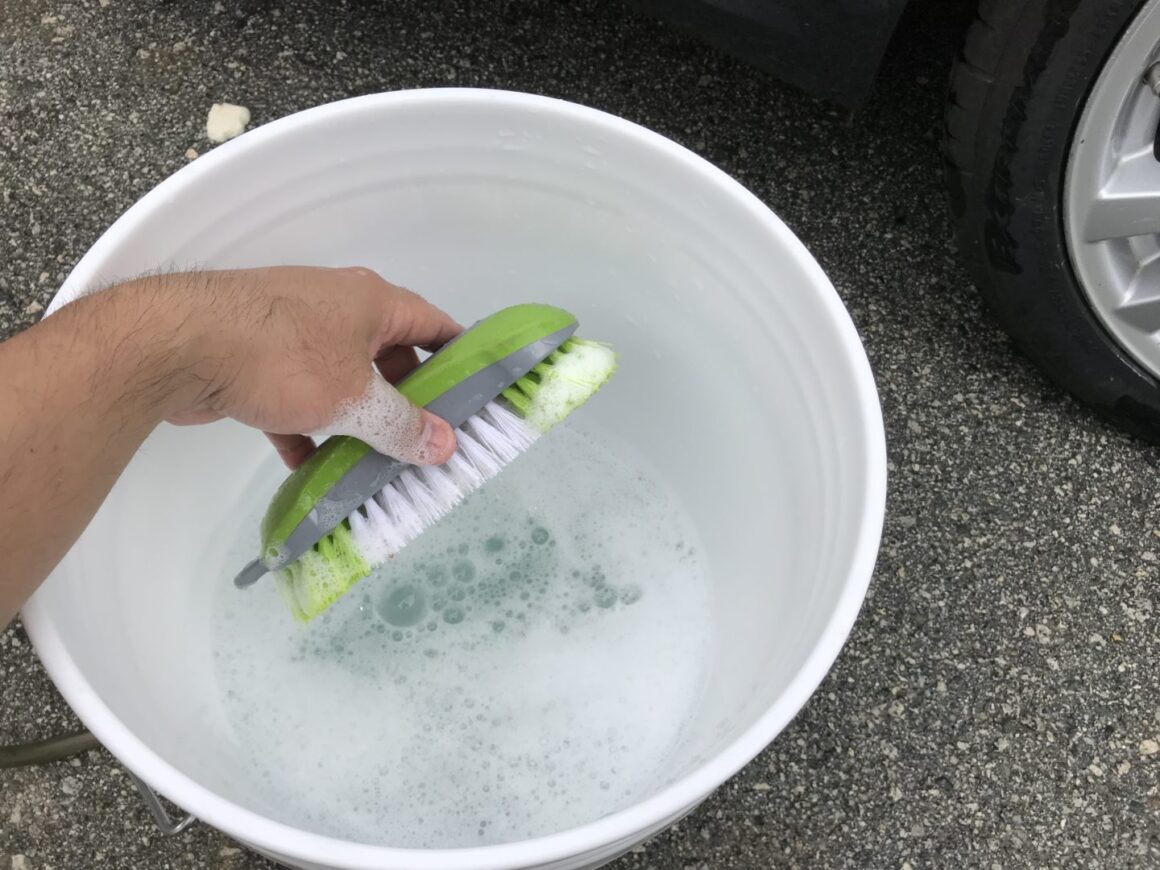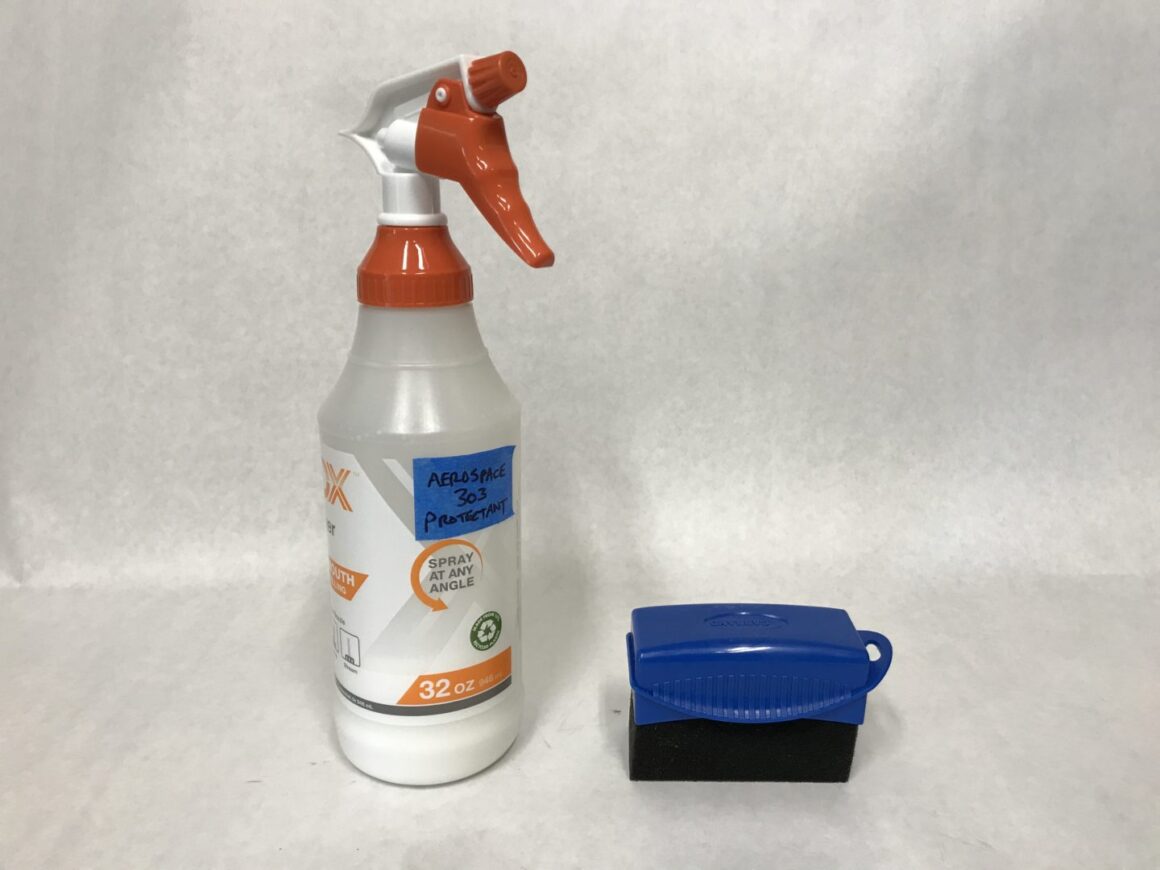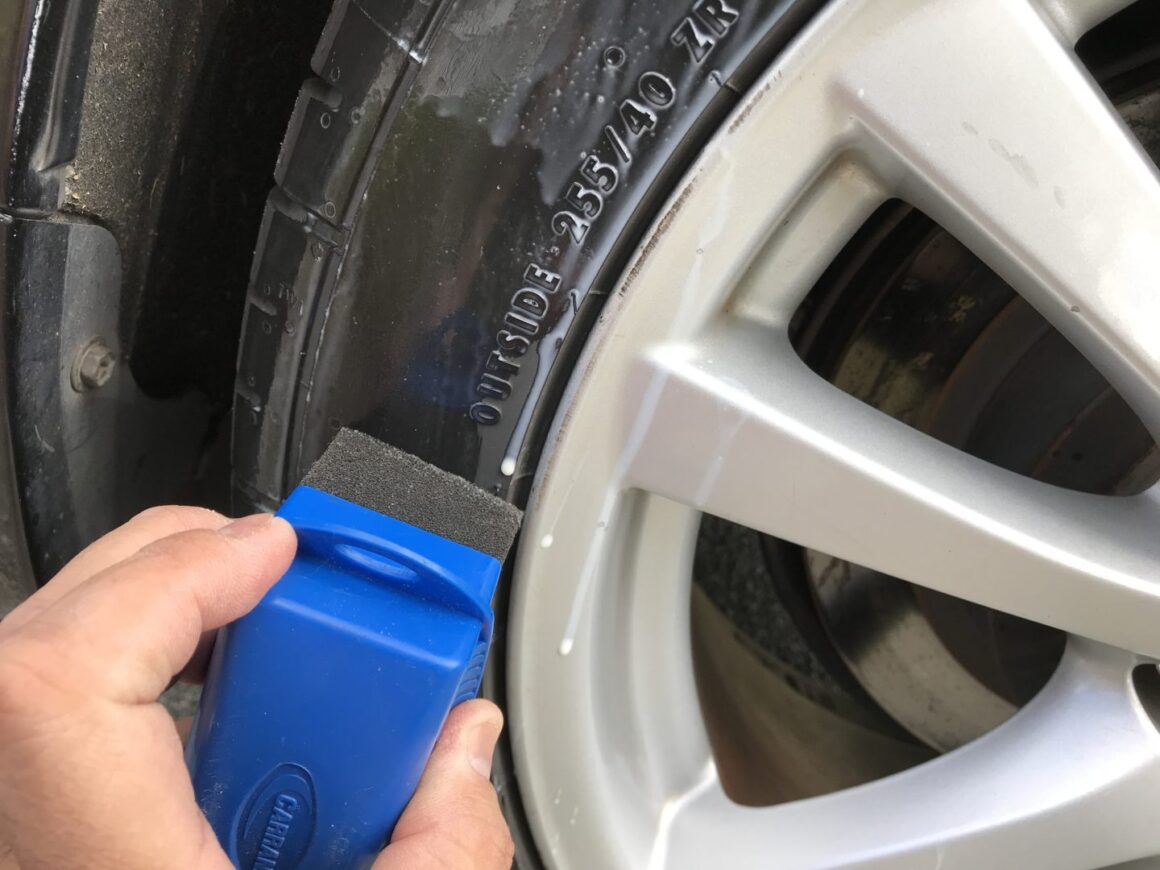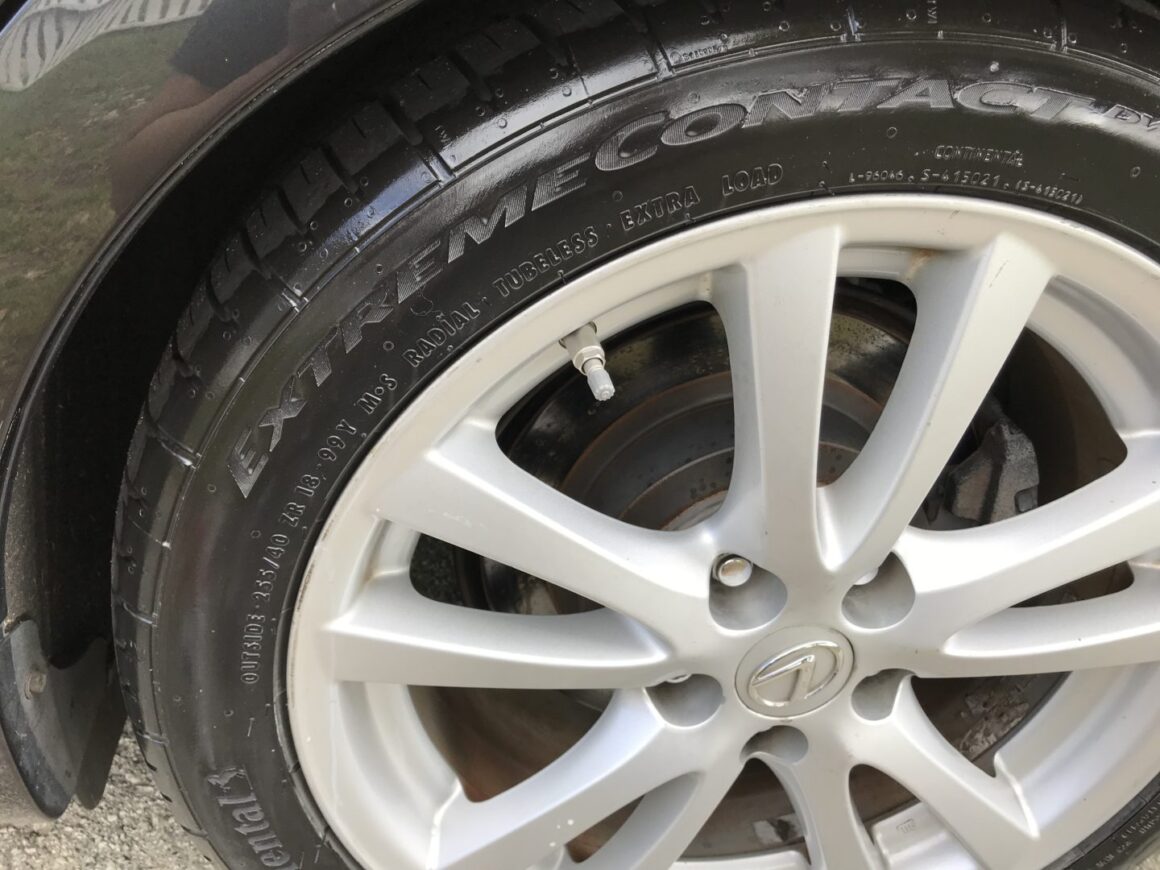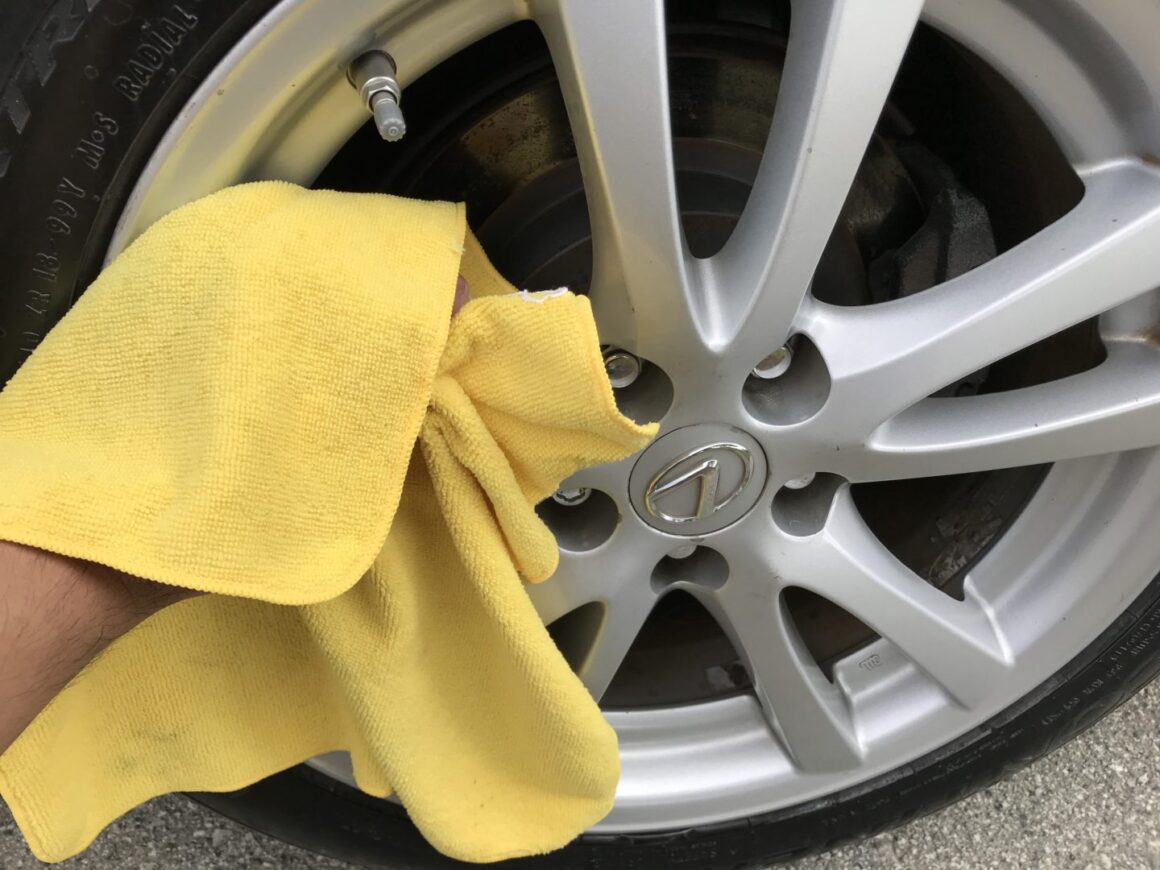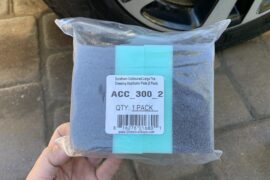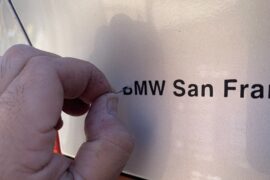When you make purchases through links on this site, The Track Ahead may earn an affiliate commission. Also, these posts are based off my own experiences. I am not responsible for any action you take as a result of reading this. Learn More
Tire cleaning and dressing is one of those small details (no pun intended) that can really make a difference in the overall aesthetics of a complete detail. Without it, the dull-looking (and possibly brownish) tires can stick out like a sore thumb.
The doesn’t take much time to clean and dress the tires, yet it makes a significant impact to your overall car detail. Tires can essentially be washed at the same time as the wheels, and dressing the tires involves applying a tire gel to the surface at the end of your car detail. This tire gel can vary in sheen, catering to your preference of gloss, satin, or matte.
Although cleaning and dressing the tires is not a complex topic, there are some important things that should be known when doing a proper tire detail. I’ll go over some of the main topics around tire detailing such as what tire blooming is, solvent-based v. water-based dressings, tire sling off, and of course, how to do a proper tire cleaning and detail.
Tools & Materials Needed
Tire Cleaner
You can your car wash soap (see exterior wash guide for recommendations) or to be more effective, an all purpose cleaner (APC) or tire/wheel cleaner.
TUF SHINE Tire Cleaner 22 oz – most recommended in auto detailing community for tire cleaning
Poorboy’s World Spray and Rinse Wheel Cleaner 1 Gallon – recommended wheel cleaner that doubles as a tire cleaner
Popular alternatives: Griot’s Rubber Cleaner, Adam’s Tire/Rubber Cleaner, Black Magic Bleche-Wite (a.k.a. Westley’s)
Tire Brush
OXO Brush – highly recommended household brush that works well for scrubbing tires
Cyclo Brushes – brush attachments if you want to machine scrub instead of hand scrub (works with PC 7424XP, or any other DA polisher with a 5/16″-24 spindle)
Popular alternatives: Mothers, Chemical Guys Stiffy, Chemical Guys Curved, Carrand
Tire Dressing
Popular options for matte/satin finish: Duragloss 253, Poorboy’s World Bold ‘N Bright, Aerospace 303, Griot’s Garage Long Lasting Tire Dressing, Optimum Opti-Bond, Adam’s VRT
Popular options for glossy finish: Griot’s Garage Black Shine Gel, Black Magic Tire Wet Gel
Tire Dressing Applicator
Carrand Foam Applicator – highly recommended for those who prefer to apply dressing with pads
Carrand Applicator Brush – highly recommended for those who prefer to apply dressing with brushes
Other alternatives: Chemical Guys Contoured Pads, Chemical Guys Microfiber Applicators
Microfiber Towels
Microfiber towels can sometimes be used as an alternative to tire dressing applicators, but this is done more as a last resort in case you don’t have any applicators. Applicators work best for applying tire dressing. However, I still use microfiber towels with a few spritz of Optimum No-Rinse Wash to clean off any excess dressing off the wheels, or in the case of any tire shine sling.
Zwipes Microfiber Cloths (48-Pack), AmazonBasics Microfiber Cloths (24-Pack)
Before/After Cleaning and Dressing the Tires
Washing the wheels and tires typically occur at the same time since they’re located in the same place. Washing wheels should be done as the very first step in a car wash or detail and so washing the tires should also be done at this time. The reason for the tires being washed in the beginning is because they are very dirty relative to the rest of the vehicle and therefore should be cleaned off first.
Dressing the tires will normally happen once you’ve already cleaned the tires. Normally you’ll be performing an exterior wash and/or a detail with the tire cleaning/detail, so you’ll need to wait until the tires are dry after cleaning before you dress them.
My typical process is to wash the tires while I’m washing the wheels at the beginning of my car wash/detail. Then when I’m all finished with everything, I’ll come back and apply tire dressing to the tire at the very end. You can probably dress the tires right after you’ve washed (and dried) the tires, but there’s more chance of the dressing being washed off during the rest of your car wash.
Tires Turning Brown (Tire Blooming)
Rubber tires have have been designed to be reduce the exposure to oxidation, ozone cracking, and UV light exposure. Various compounds are added to the tires in order to be resistant to these environmental exposures. Antiozonants specifically, are added to tires to resist cracking of the tires over time due to the exposure to a highly reactive gas called ozone. You may have heard of the ozone layer in the stratosphere (upper atmosphere), but there are also naturally and man-made ozone existing within the troposphere (lower atmosphere).
Antiozonants are meant to seep out of the tire surface so that the outer surface continues to resist environmental exposure. However, when the antiozonant comes into contact with ozone gases and leaves behind a brownish residue. This reaction is called blooming.
You’ll find that many people contribute the browning of tires to using solvent-based tire dressing. Although solvent-based tire dressings can contribute to tire blooming, it is not always the main reason. Since modern rubber tires are designed to release these antiozonants, it is typical for tires to brown as they wear. Furthermore, even the dirt collected on the tires from everyday driving can be the cause for a brown-colored tire.
Solvent-Based v. Water-Based Dressings
Both solvent-based and water-based tire dressings include silicone (which produces the “shine” that is generally desired), however the difference between the two is how they are ‘carried’. The carrier fluid in solvent-based dressings is a hydrocarbon, which is considered a volatile organic compound (VOC). Meanwhile, water-based dressings carry silicone via (you guessed it) water.
Solvent-based tire dressings have a history of being highly flammable, harmful to the environment and people, and make tires hard/brittle over time. They were even more likely to sling off and cause damage to the car’s paint. However, these tire dressings were in demand due to the fact that they would produce a quick and easy gloss shine.
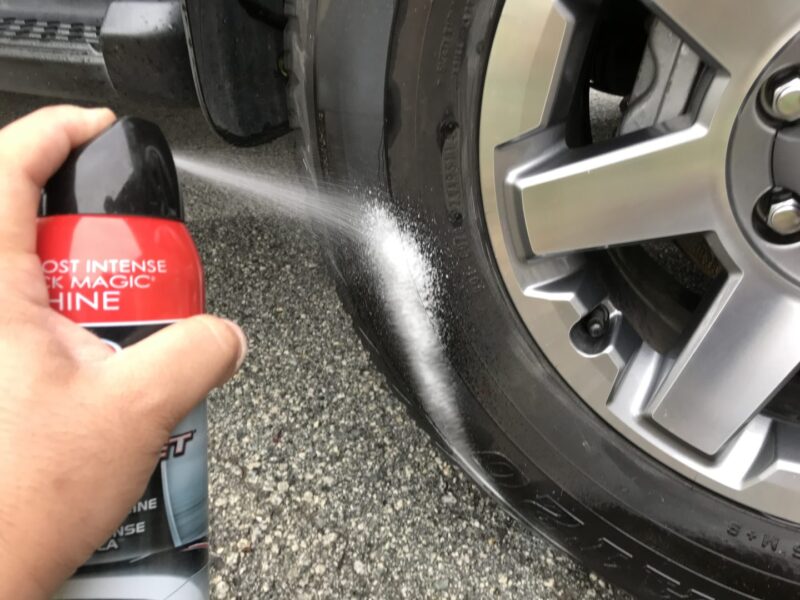
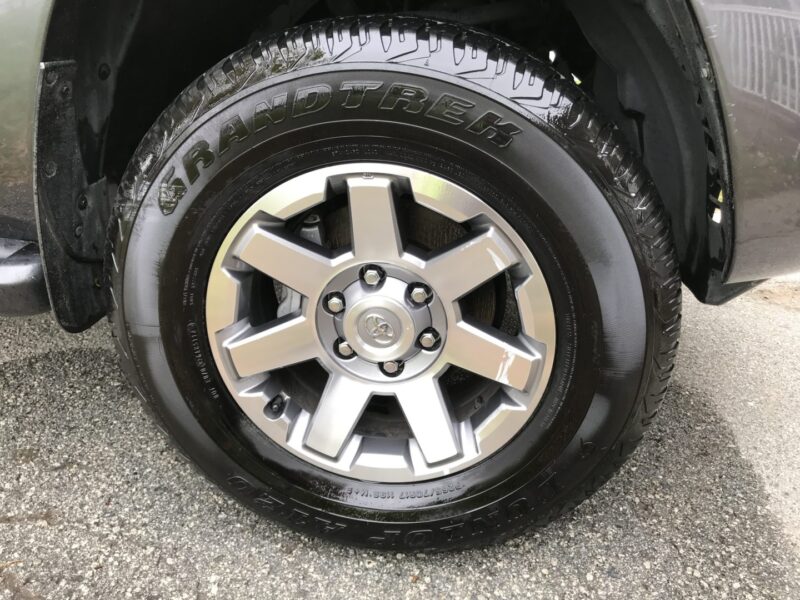
Water-based tire dressings tend to appear milky in texture. They tend to address all of the issues that solvent-based formulas have: they are more environmentally-friendly and more safe, have less potential for sling off, etc. The only difference is that water-based dressings will take a bit more effort to get that extra shine. Interestingly, the detailing industry has slowly moved towards water-based tire dressings as there has been a shift in preference from a glossy-looking tire to a more matte or satin one.
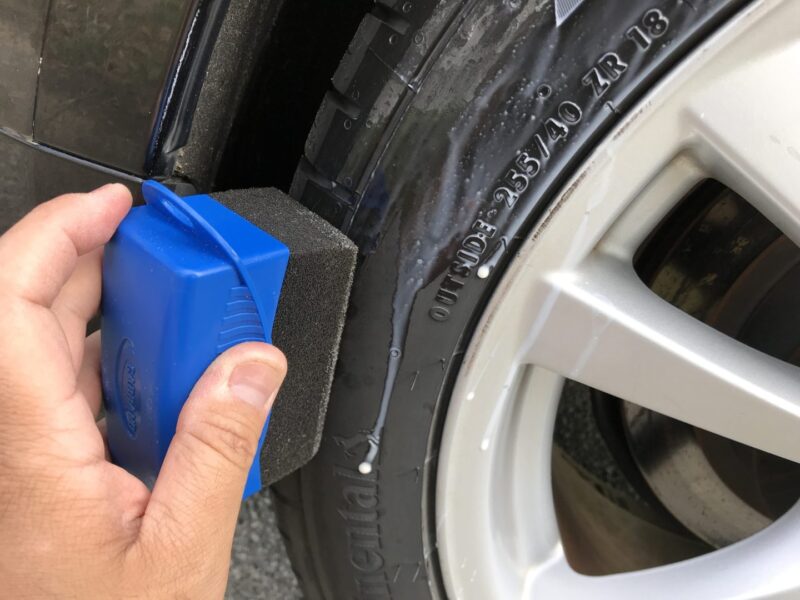
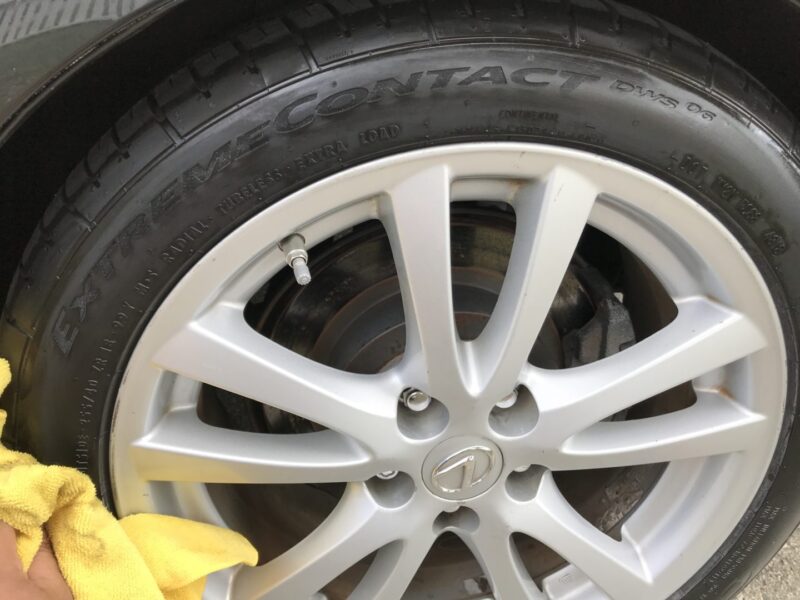
Tire Sling
Tire sling refers to tire dressing ‘slinging’ off of the tires and splattering onto the car’s paint. This happens as soon as you begin driving with the tires rotating quickly. Some solvent-based tire dressings are notorious for doing this, but no matter what tire dressing you use, solvent-based or water-based, there is always the possibility of tire sling if you don’t allow it to properly dry before driving.
After applying tire dressing, it’s important to wipe off any residual solution that you might have on the tires, wheels, and even around the lettering of the tire sidewalls. The tire dressing should also have an adequate amount of time to dry before you take the car out for a spin.
How to Clean and Dress Tires
This guide goes specifically into cleaning and dressing tires, however know that cleaning tires usually happens at the same time as washing wheels, and dressing tires about the same time as protecting the wheels.
Fill a dedicated bucket with soap and water for your tire wash. This dedicated bucket should not be used to clean your car’s paint at the same time as this prevent any of the the dirt and gunk from your tires getting on your car’s paint surface.
Using a tire cleaner is very effective at deep cleaning the surface of the tires. Spray the cleaner directly onto the tires and scrub the tires with a tire brush. If using the car wash soap, dunk the brush into the dedicated wash bucket and scrub the tires.
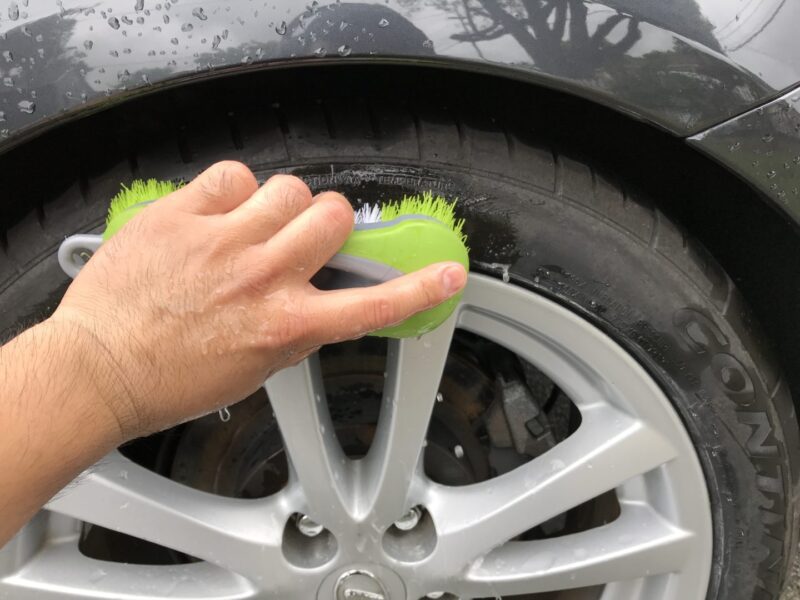
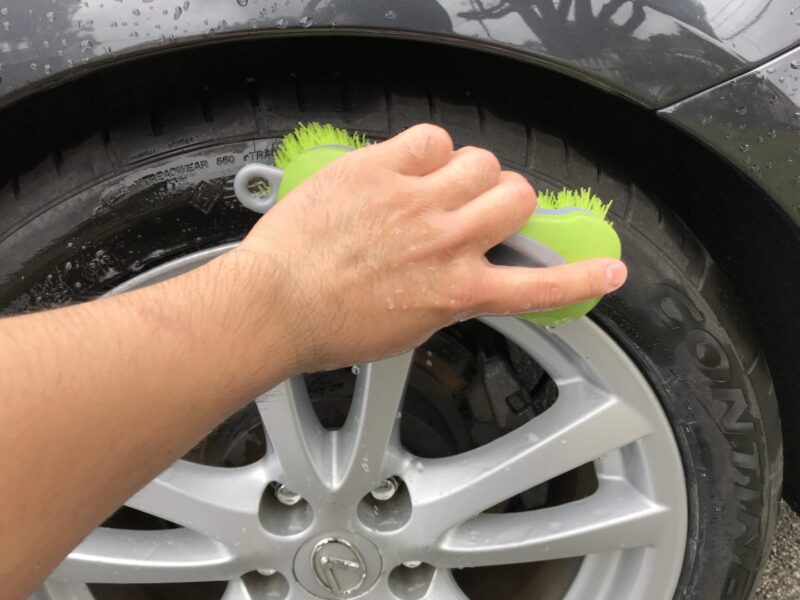
Work your way all around the tires with the brush. Don’t be afraid to be more aggressive with the scrubbing. But, be careful to not scrub the wheels as this can introduce scratches in the wheel’s finish.
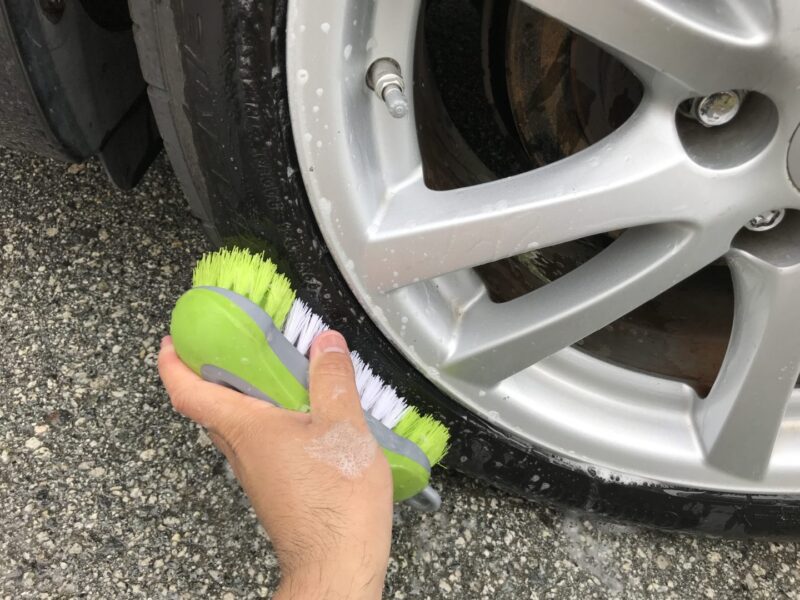
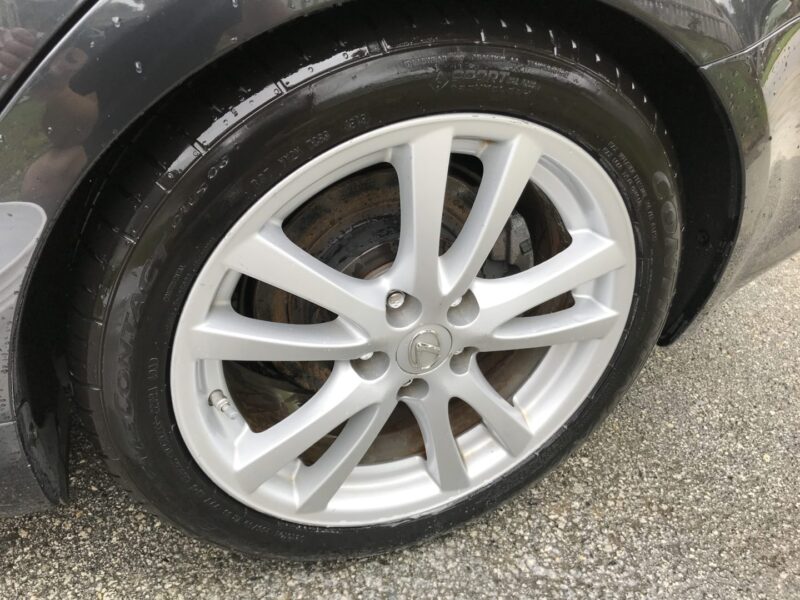
Rinse down the entire tire/wheel until all the residue is gone. Clean and rinse down one tire at a time, otherwise you risk the dirtied soap/tire cleaner drying on the surface of the tire and wheel.
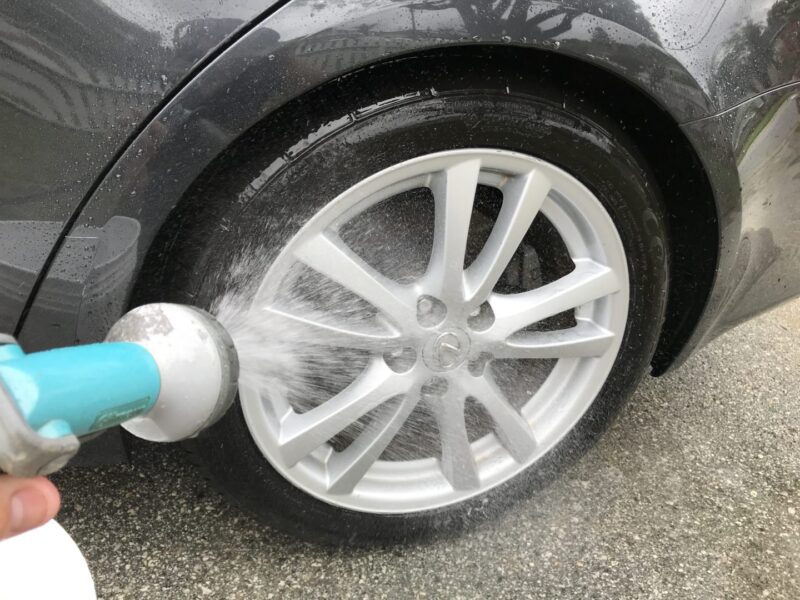
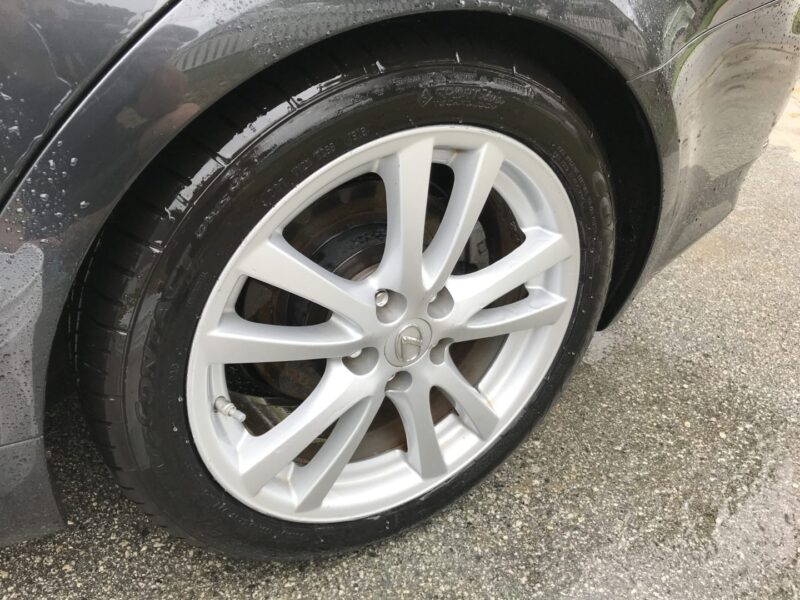
Use an old microfiber cloth to wipe down the tire’s surface. This should be a throwaway towel; do not use it again for the car’s paint surface. If your microfiber cloths keep leaving lint behind, you can also let the tire dry on its own.
It’s best to have a microfiber cloth that leaves minimal lint behind. Use this cloth to dry the majority of the tire, and let the ambient air dry it the rest of the way. Another option is to use a leaf blower to get the tire thoroughly dry.
I apply my tire dressings with a foam applicator. I’m not a fan of brushes (albeit being easier to apply). Perhaps I have a heavy hand, but the brush seems to sling off a bit onto other surfaces while I’m applying dressing. With that said, there are many detailers out there who prefer applying dressing with a brush over a foam applicator.
You may spray the tire dressing directly on the tire (for ease of application) or onto the applicator first (for cleaner application). If you spray on the tire directly, you’ll likely have to do more cleanup of the wheel due to over-spray.
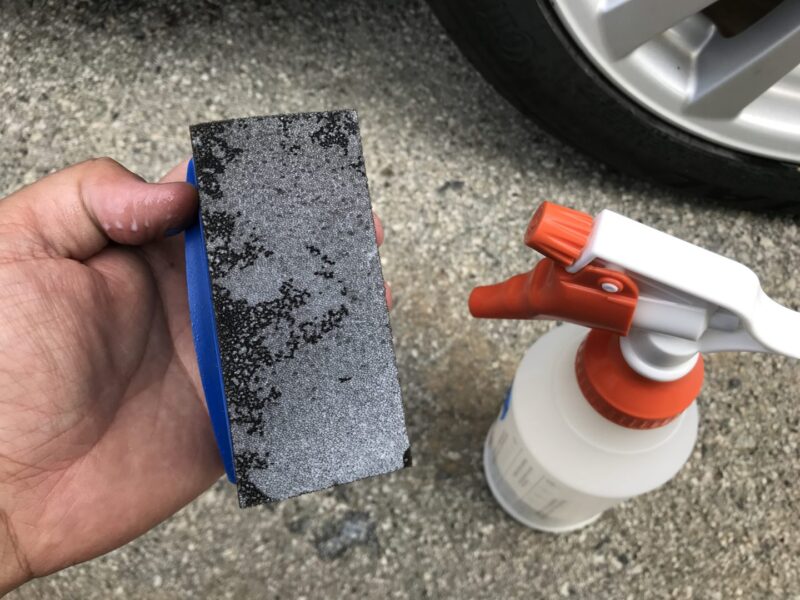
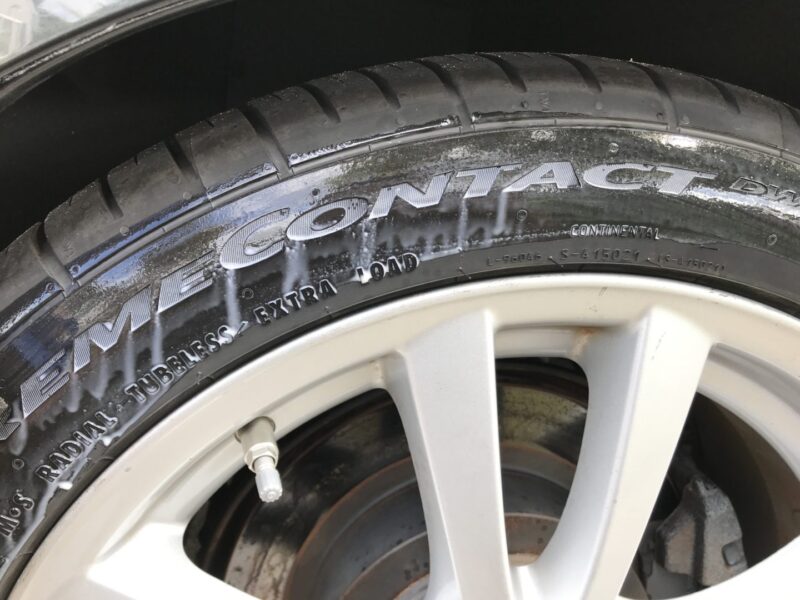
Use the tire dressing applicator and rub it against the tire liberally. This will apply the tire dressing over the tire sidewall.
To get to the gap between the wheel and tire, angle the foam applicator so that the corner of the foam runs along inside the gap. You’ll likely get some tire dressing on the wheel from this process, but you’ll need to wipe it all off with a microfiber towel at the end anyway.
To minimize the amount of tire sling when you drive the car, use a dedicated microfiber cloth to wipe down the excess tire dressing off. Also allow any remaining tire dressing to air dry completely before driving your car. Be cautious of the dressing pooling up around the raised lettering of the tire sidewall, which can sling off as well.
Before (left) and after (right). If you want more a bit more gloss, you can always apply a second coating. You can even apply a third if you want even more. For me, the important thing is that the tire is clean and that I’ve protected the tire adequately until the next cleaning and dressing.
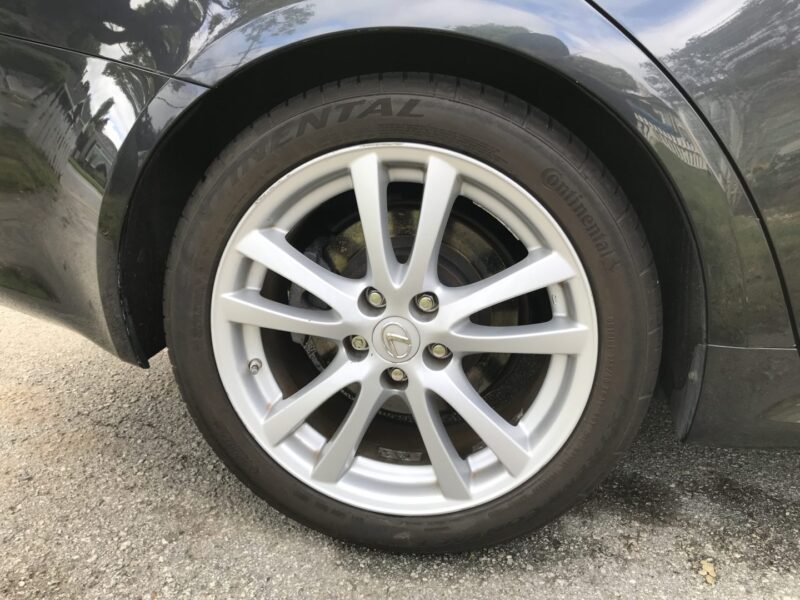
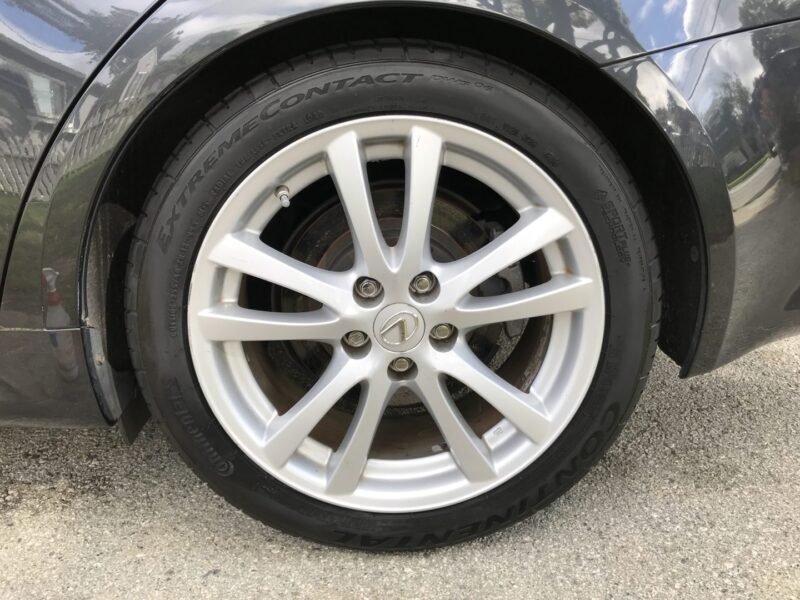
A Note On Spray-On Solvent-Based Tire Dressings
My preferred tire dressing is a water-based one. With all of the benefits of water-based dressings over solvent-based ones, there’s little reason to go with the latter.
I’ve used a spray-on product before and I’ll say that it was indeed easy to apply. The instructions say to spray on the tire sidewall (sprays on with a foam) and to let it dry. No need to wipe off.
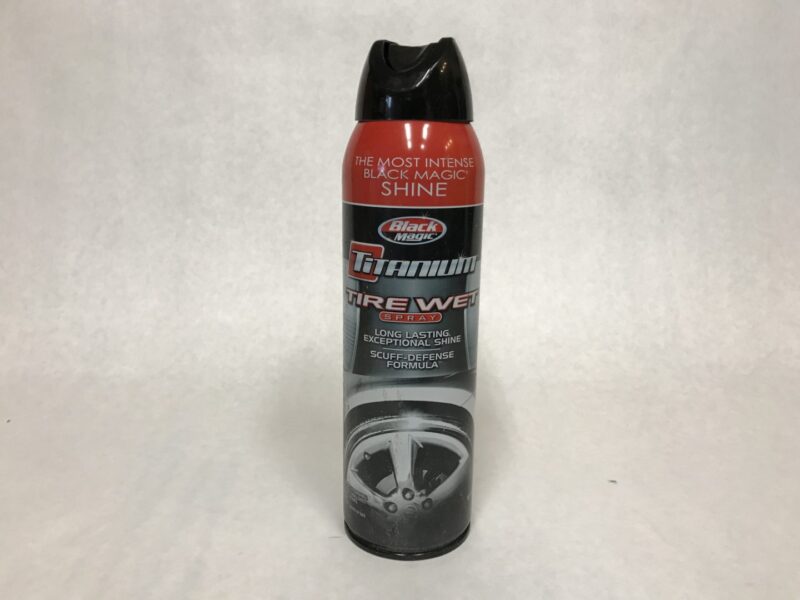
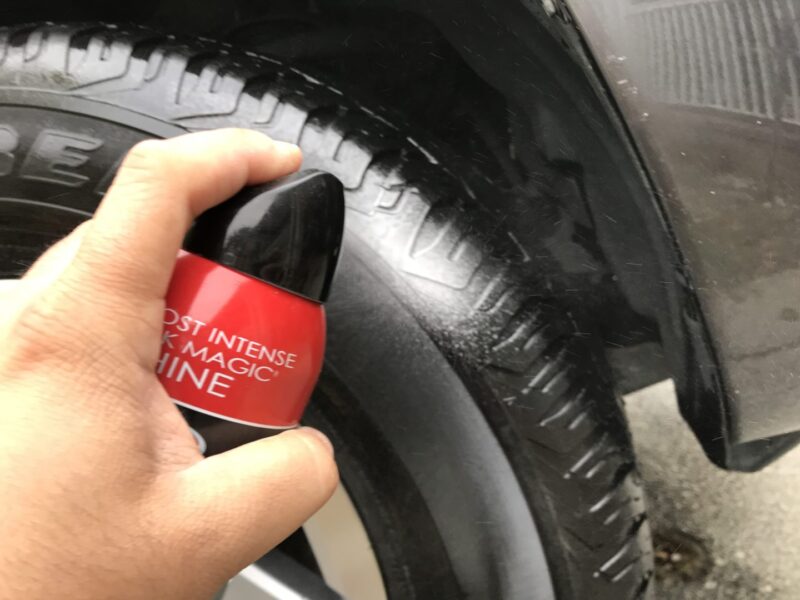
Just like with the tire dressings, I still wiped off the overspray on the wheels and left the formula to air dry on the tires.
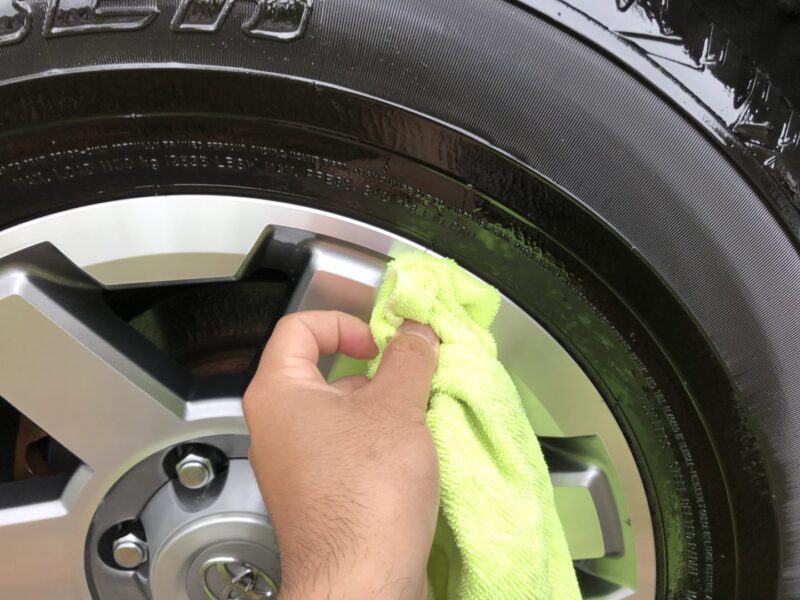
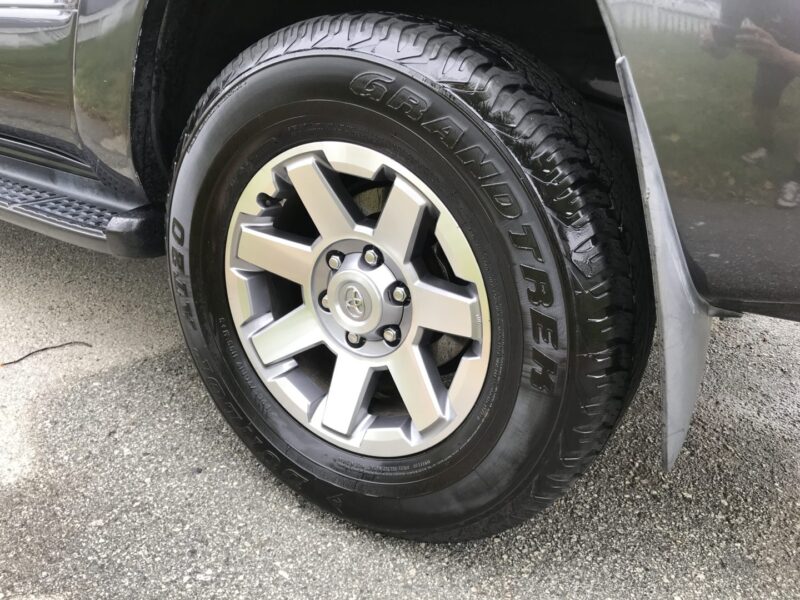
You can see below that the shine isn’t very uniform (because of the spray-on application) and it’s a bit too glossy for my taste.
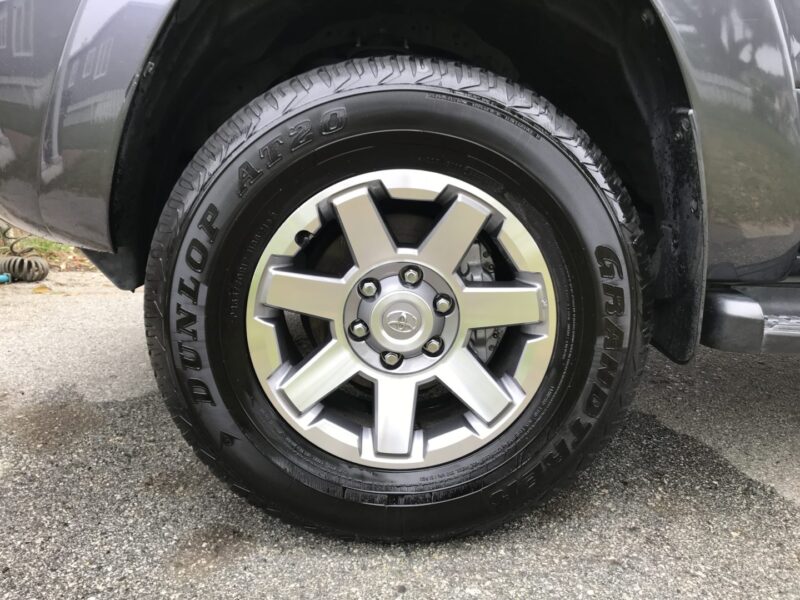
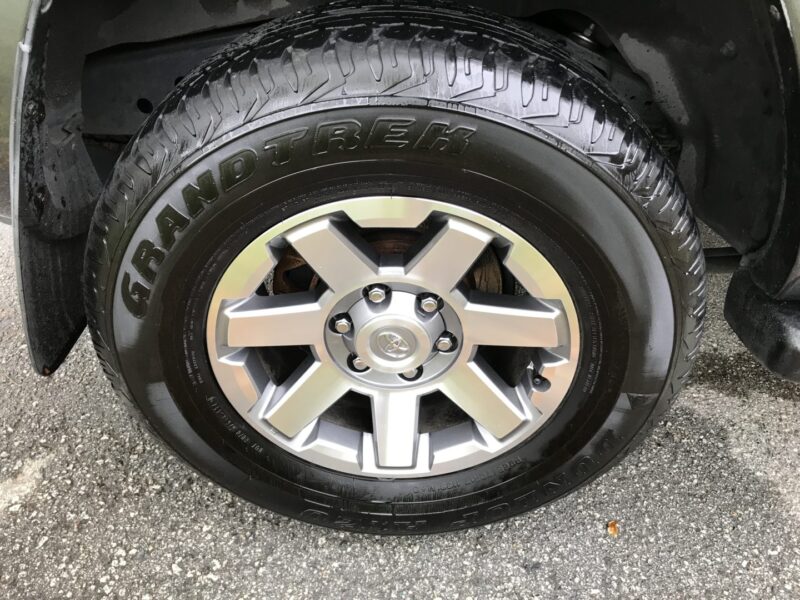
The water-based tire dressings are more environmentally-friendly, safer to use, more uniform application, better looking sheen, and it doesn’t take that much longer to apply. I think I’ll stick with water-based tire dressings over the solvent-based ones.
Want to know more about detailing your wheels? Check out my post on cleaning and protecting wheels here.

